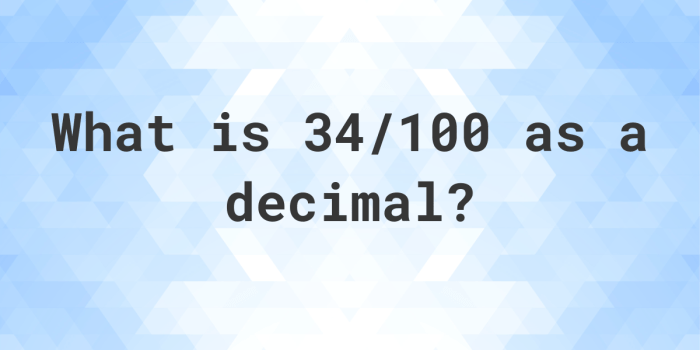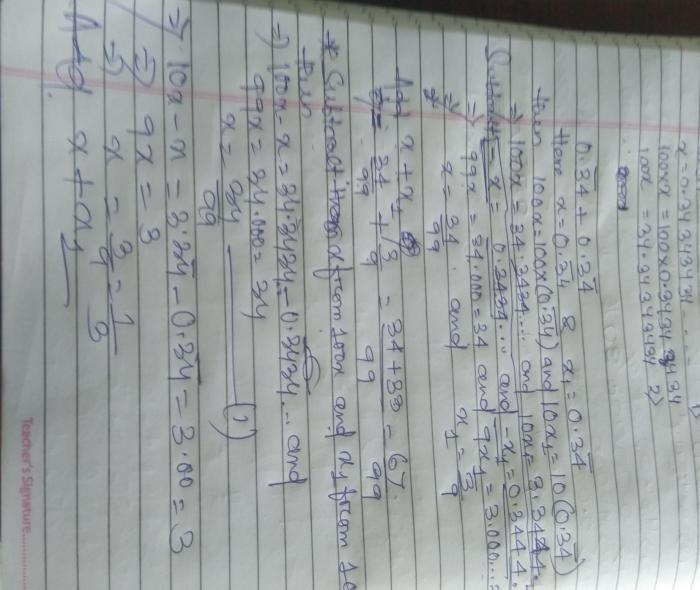Express 71/1000 as a decimal. – Express 71/1000 as a decimal, a seemingly straightforward conversion, holds significant implications in our understanding of numbers and their practical applications. Join us as we delve into the intricacies of this transformation, exploring the process, its decimal representation, and its far-reaching uses.
Converting fractions to decimals is a fundamental skill that unlocks a deeper comprehension of mathematical operations. In this exploration, we will meticulously guide you through the step-by-step conversion of 71/1000 into its decimal equivalent, providing a clear understanding of the underlying principles.
Convert Express 71/1000 to Decimal

Converting a fraction to a decimal involves dividing the numerator by the denominator.
Expressing 71/1000 as a decimal is simple, just divide 71 by 1000, which gives us 0.071. This concept is often used in everyday life, like when we convert percentages to decimals. Speaking of literary devices, the phrase “and thus I clothe my villainy” and thus I clothe my villainy from Shakespeare’s Hamlet highlights the idea of disguising one’s true intentions.
Similarly, in math, we can express fractions as decimals to make calculations easier. Returning to our example, 71/1000 as a decimal is 0.071.
To convert 71/1000 to a decimal, we can follow these steps:
Step 1
- Set up a long division problem with 71 as the dividend and 1000 as the divisor.
Step 2, Express 71/1000 as a decimal.
- Divide 71 by 1000, which gives us 0.071.
Step 3
- Since the remainder is 0, the decimal 0.071 is the exact value of 71/1000.
Therefore, 71/1000 as a decimal is 0.071.
Decimal Representation of Express 71/1000: Express 71/1000 As A Decimal.

The decimal representation of 71/1000 is 0.071. In decimal notation, the decimal point separates the whole number part from the fractional part. The fractional part represents the value of the digits to the right of the decimal point, with each digit representing a specific power of 10. In the case of 71/1000, the 7 represents seven hundredths (7
- 1/100), and the 1 represents one thousandth (1
- 1/1000). Therefore, 71/1000 can be expressed as 0.071 in decimal form.
Significance of Decimal Point and Place Value
The decimal point serves as a marker to separate the whole number part from the fractional part in a decimal representation. The fractional part represents a value less than one, and each digit to the right of the decimal point represents a specific power of 10. In the case of 0.071, the 0 represents the whole number part, and the 7 represents seven hundredths (7
- 1/100). The 1 represents one thousandth (1
- 1/1000). Therefore, the decimal representation 0.071 can be interpreted as 0 + 7/100 + 1/1000.
Applications of Decimal Representation

Decimals are a convenient and versatile way to represent fractions, allowing for precise calculations and comparisons. They find widespread applications in various fields, from everyday life to complex scientific computations.
Everyday Applications
Decimals are commonly used in everyday situations, such as:
- Measuring ingredients in cooking recipes, ensuring precise proportions.
- Calculating distances on maps, providing accurate measurements for navigation.
- Expressing percentages, facilitating comparisons and understanding of relative quantities.
Comparison with Fraction Representation

When comparing the decimal representation of 71/1000 (0.071) with its fraction representation, we find that the decimal form provides a more convenient and concise way to represent the value.
Advantages of Decimal Representation
- Simplicity:Decimals are easier to read, write, and compare than fractions. The decimal point clearly separates the whole number part from the fractional part.
- Accuracy:Decimals can represent values with greater precision than fractions. For example, 0.071 represents the value 71/1000 exactly, while the fraction 71/1000 can only be approximated as a decimal.
- Convenience:Decimals are more convenient for calculations. Operations like addition, subtraction, multiplication, and division are easier to perform with decimals than with fractions.
Disadvantages of Decimal Representation
- Truncation:Decimals can sometimes result in truncation, where the value is rounded off to a certain number of decimal places. This can lead to loss of precision, especially when dealing with very small or very large numbers.
- Recurring Decimals:Some fractions, such as 1/3, cannot be represented as a terminating decimal. Instead, they result in a recurring decimal, which can be inconvenient to work with.
Query Resolution
What is the decimal equivalent of 71/1000?
0.071
How do I convert a fraction to a decimal?
Divide the numerator by the denominator.
What are the advantages of using decimals over fractions?
Decimals are easier to compare and perform calculations with.
